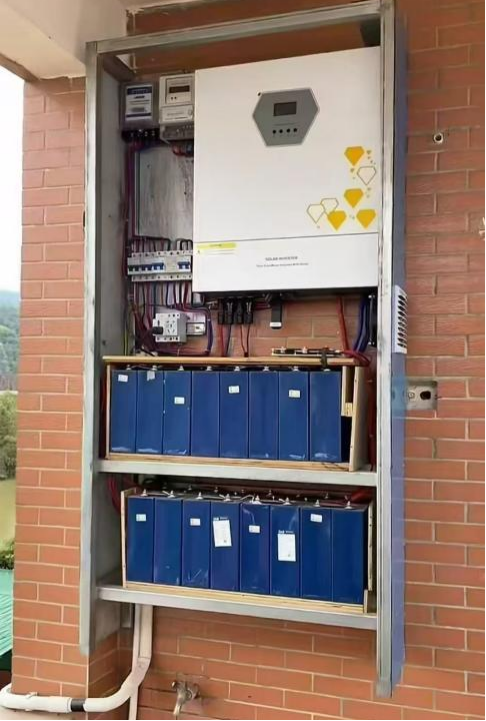Maximize lithium-ion battery lifespan with expert tips on charge management, temperature control, and risk mitigation.
Lithium-ion batteries power modern life, from smartphones to electric vehicles and grid-scale energy storage. However, improper usage can lead to premature aging, overheating, or even dangerous swelling. This guide provides actionable strategies to optimize battery health and avoid common pitfalls, backed by industry data and real-world case studies.
The battery cells shown in the picture lack waterproof protection and are exposed daily to sun, wind, and weather conditions. Without proper sealing, moisture, dust, and UV exposure can lead to:
- Corrosion on terminals & connections
- Reduced lifespan due to thermal stress & oxidation
- Potential safety risks from water ingress
Even without physical impact, long-term outdoor exposure weakens structural integrity, increasing the risk of:
- Cracked casing from temperature fluctuations
- Internal damage from humidity & condensation
For outdoor use, we strongly recommend:
IP65+ Enclosure(prevents water/dust entry)
UV-Resistant Covers (shields from sun damage)
Proper Ventilation (avoids overheating)
1. Fundamental Maintenance Practices
A. Charge Management
Optimal Range: Keep State of Charge (SOC) between 20%-80% for daily use.
Example: A 2023 study by EVE Energy showed that limiting discharge depth to 60% (e.g., 40% → 80%) extends cycle life by 2.3x compared to full 100% cycles.
Avoid Overnight Charging: Continuous trickle charging at 100% SOC accelerates electrolyte oxidation.
Scenario Safe Range Critical Risk Threshold
Charging 10℃–45℃ <0℃: Lithium plating
Discharging -20℃–60℃ >60℃: SEI layer breakdown
Storage 15℃–25℃ >50℃: Accelerated aging
Case Study: A solar farm in Arizona stored LiFePO4 batteries in an uninsulated container (peak 68℃). Capacity dropped to 78% within 18 months vs. 94% for temperature-controlled systems.
2. High-Risk Scenarios & Solutions
A. Overheating Causes
Overcharging
·Example: Using a mismatched 5A charger on a 3A-rated battery caused a 280Ah cell to reach 72℃(vs. normal 45℃), triggering BMS shutdown.
·Fix: Always use manufacturer-approved chargers with voltage/current limits.
High Ambient Heat
·Example: An EV parked in direct sunlight (50°C cabin) saw battery cooling systems consume 18% more energy to maintain safe temps.
·Fix: Park in shade/pre-cool cabins before charging in hot climates.
Internal Short Circuits
·Example: A dented cell from improper forklift handling caused a micro-short, leading to localized heating (58°C) and 12% capacity loss.
·Fix: Inspect cells for physical damage monthly; use protective casings.
B. Swelling (Bloat) Triggers
Gas Buildup from Over-Discharge
·Example: A 100Ah LiFePO4 cell discharged to 0% for 3 months swelled by 8mm due to electrolyte decomposition.
·Fix: Store batteries at 50% SOC; set BMS low-voltage cutoff at 2.5V/cell.
Poor Ventilation in Multi-Cell Systems
·Example: A tightly packed 48V ESS module developed swollen cells after 2 years due to hydrogen gas accumulation.
·Fix: Maintain ≥5mm spacing between cells; install hydrogen sensors.
3. Proactive Health Monitoring
A. Key Metrics to Track
Parameter Healthy Range Warning Threshold Tool
Cell Voltage Delta ≤50mV >100mV Multimeter/BMS
Internal Resistance ≤1.2x initial value ≥1.5x initial value Hioki BT3562
Surface Temperature ≤45°C (charge) >55°C IR Thermometer
B. Maintenance Schedule
Daily: Visual check for swelling/leaks.
Monthly: Measure cell voltage balance.
Annually: Full capacity test (0.5C discharge).
4. Emergency Protocols
If Overheating Occurs:
·Disconnect power immediately.
·Move the battery to a non-flammable surface.
·Use a Class D fire extinguisher only if flames appear.
If Swelling is Detected:
·Isolate the affected cell/module.
·Do NOT charge/discharge.
·Dispose via certified e-waste channels.
5. Recommended Accessories
ESS Users: Install thermal cameras (150−300) for 24/7 monitoring.
EV Owners: Use OBD-II scanners with battery analytics (e.g., Torque Pro).
DIY Builders: Adopt JK/PACE BMS with Bluetooth alerts.
Conclusion
By adhering to these guidelines, lithium-ion batteries can reliably deliver 8-10 years of service. For customized maintenance plans or bulk procurement of EVE/CATL Grade A cells, contact our technical team.
 +86 13332949210
+86 13332949210 info@xihobattery.com
info@xihobattery.com







 Xiho
Xiho Apr 18 2025
Apr 18 2025










